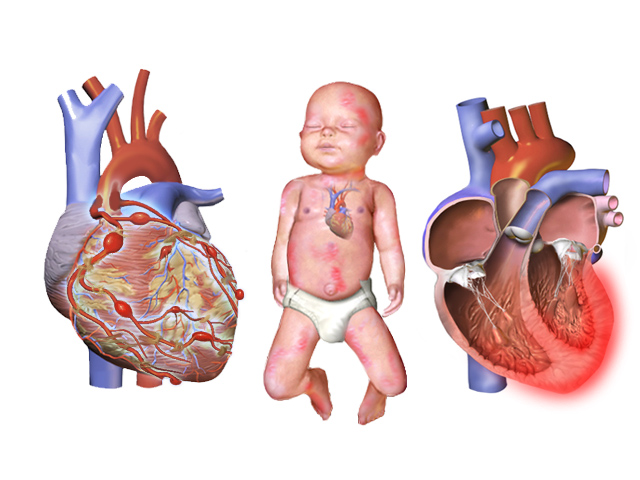Timing Matters in Dealing with Kiwasaki Disease
A man was sharing a story about how his son was diagnosed with Kawasaki disease, he was so shocked and wondering how all these came to be. For me, hearing him speak about it was the first time, just like his experience was also the first time for him. Kawasaki disease was described first by a Japanese pediatrician named Dr Tomisaku Kawasaki, in the year 1967, he observed a 4-year-old child who was exhibiting several clinical symptoms, including a skin rash and high-grade fever.

credit
At first, he called the diagnosis "acute febrile mucocutaneous lymph node syndrome (MCLS)." This initial diagnosis faced skepticism, but the doctor was persistent. After he collected 50 cases, he published his findings in addition to meticulous hand-drawn diagrams. The disease was renamed Kawasaki as a tribute to him, as the original description of the condition still aligns closely with the current diagnostic criteria.
The clinical diagnosis of the disease includes; rash, fever, bilateral nonexudative conjunctival injection, swelling around the hands and feet, oropharyngeal findings which include erythematous lips and strawberry tongues. Kawasaki disease is in four stages; acute febrile, subacute, convalescent, and chronic.
The acute febrile phase is characterized by fever which is often higher than 39 degrees Celsius. This phase usually lasts for about 1-2 weeks, pink eye, rashes around the groin or trunk, red skin on the hands and feet, swelling in lymph nodes. The subacute phase comes with diarrhea, stomach upset, and pains around the belly and joints, this phase begins when the fever goes away, and the skin on the hands and feet begins to peel. The third stage is the convalescent stage where symptoms begin to slowly fade away, but complications can persist.
The disease is a rare one, and when it happens, the inflamed blood vessels become weak and stretched out, when that happens, it means they are at the risk of tearing, they can also develop scarring and become extremely narrow, with this limitation, there is a restriction to how much blood can get through to nourishing organs and tissues of the body.
The disease is more common amongst children within 6 months years of age, an affected child has all their arteries affected, but the biggest concern is the coronary arteries, which supply blood to the heart. If treatment is administered on time, an affected child can recover within two months.
It could come with complications including; blood clots and narrowing of the coronary arteries, aneurysms, problems with heart valves, blood clots, inflammation of the child's heart, hepatitis in the child's liver, inflammation in the lungs, heart attack, heart failure, pancreatitis and infections in the heart of the child.

credit
Early diagnosis and treatment make the situation better, with a fast treatment, recovery time is hastened, and there is a reduced risk of complication. With treatment not administered on time, a child may get heart complications, which is fatal in about 2-3% of cases. Kawasaki disease has been found as well to be one of the most common causes of acquired heart disease in children below the age of 5 in the United Kingdom.
To treat Kawasaki disease, experts administer, IV fluids for hydration, aspirin, medications to help with pain and swelling, anticoagulants, cold compresses, steroids or other anti-inflammatory medications which are given in severe cases, human blood proteins or immune globulin (IVIG) which a child may not respond to at first dosage so it may require a second dosage or other medications.
For Further Studies.
https://pmc.ncbi.nlm.nih.gov/articles/PMC6374576/
https://www.ncbi.nlm.nih.gov/books/NBK537163/
https://www.jpedhc.org/article/S0891-5245(11)00232-X/fulltext
https://www.ahajournals.org/doi/10.1161/CIR.0000000000001295
https://my.clevelandclinic.org/health/diseases/13457-kawasaki-disease
https://www.mdpi.com/1422-0067/24/18/13948
https://bmcinfectdis.biomedcentral.com/articles/10.1186/s12879-021-06046-2
https://www.nhs.uk/conditions/kawasaki-disease/
https://www.cdc.gov/kawasaki/about/index.html

Hi, I am Tobi a writer, speaker, relationship blogger, and lover of good music. I love making friends and learning from people. Want to hear me speak on relationships and general life issues, you can find my YouTube channel where you can listen and watch any episode for free, please do not forget to subscribe, friends. I sincerely appreciate every love I get from here, Kindly do well to keep them coming.
Appreciate the support, thank you.
Thanks for your contribution to the STEMsocial community. Feel free to join us on discord to get to know the rest of us!
Please consider delegating to the @stemsocial account (85% of the curation rewards are returned).
Thanks for including @stemsocial as a beneficiary of this post and your support for promoting science and education on Hive.